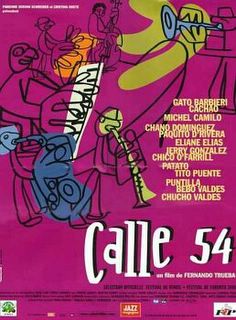Houston Symphony, Sat. 1/15/05
Brahms - Symphony #3, Bartók -
Duke Bluebeard’s Castle
It began and ended in darkness, with low strings intoning the long notes that frame
Duke Bluebeard’s Castle. The drama of Béla Bartók’s lone opera involves light that has limited and temporary power to illuminate Bluebeard’s world. Hans Graf conducted the Houston Symphony in a concert performance lit by local duo the Art Guys, who confined the light in Jones Hall to the space under the musicians’ chairs, music stand lights, and two lanterns carried by François LeRoux and Sally Burgess in the roles of Bluebeard and his young bride Judith. The rest was darkness.
The libretto by Béla Balázs calls for colored lights to accompany the opening of each of the seven locked doors that Judith confronts in the main chamber of the castle. The Art Guys' effective lighting scheme installed LED lights under the chairs in the orchestra, controlling the varied shades and intensity of color through computerized algorithms that affected each light individually. Without obvious patterns, the light was able to undulate in waves, sparkle with the glint of treasure, and become tainted with the red of blood.
The performance was excellent. Hans Graf can be too restrained and a little stuffy sometimes, but his pacing and balance were right on here. Burgess and LeRoux were in good voice and nicely characterized their roles. My only complaints have to do with two interpretational choices: 1) the Prologue was skipped; and 2) Judith’s emotional range was too broad (a compliment to the execution, but not the conception).
The spoken prologue is a kind of Brechtian framing device, transitioning the audience from their preoccupations and into the realm of Bluebeard’s Castle . The last verse reads:
"Enter. Start the music. Raise the curtain.
Put away your lives that may find them. Lo!
Bluebeard’s castle! Soon you’ll see…but you know
The story, know the moral. Are you certain,
Ladies and gentlemen?"
This address to the audience is a challenge directly from Balázs and Bartók to delve into the opera’s symbolism rather than passively watch events unfold. This is no fairy tale, they say.
Fleshing out Judith’s personality brings more realism to the role than I think there should be. Beyond a few early references that establish her as external to the castle, Judith is not really a person, but Love as a force working on the dark corners of Bluebeard’s psyche. Bring too many shades in – Burgess tinged the role with youthful fear, impertinence and imperiousness (Judith is a newly minted duchess, after all) – and Judith becomes more clearly situated as a victim.
This overshadows Bluebeard’s tragedy. In an inversion of the classic Wagnerian formula, he cannot be redeemed by Love. Unlike Tristan, he is bound to blood and sinew, despite repeated attempts at salvation. The wives living in the seventh chamber have each failed to heal the psychic wounds of Bluebeard. Judith’s love is part of a cycle likely to repeat as long as Bluebeard lives. (Granting Judith the crown of night implies Bluebeard is at the end of his life, but the final passage leaves the dominant unresolved and open-ended.)
The concert opened with Brahms’s Symphony No. 3. It wasn’t the smoothest rendering, but the taut and sinewy first movement sounded well. The Allegretto third movement was the highlight, with beautifully shaped long paragraphs played with just a touch of delicacy by the Symphony’s strings. The second and fourth movements rambled some, and I'm not sure how to distribute the blame between Brahms and Graf. Since my natural tendency is to abuse Brahms, I will refrain from trying.
======
So, then. A practice review, under 600 words. Feels a little stiff, but I'm still getting my legs. And I keep having to hold back from typing "But I may be full of sh*t" after every other opinion.
Left this out. It seemed a little much and I was self-imposing a word count. It is reasonbly well thought out, though:
Bluebeard knows the tragedy is his. He is powerless to stop the doors opening, but keeps trying to raise his defenses. With the fifth door he presents his magnificent wide-reaching lands. The light and music are both dazzling in their brightness, and Bluebeard does virtually all the singing, not because he is proudest of his kingdom, but because this is his last chance to halt the revelations. He is begging Judith to become lost in their splendor. This is the point where the lighting failed by being so contained in the space under the musicians. I was hoping to have to shield my eyes from blinding whiteness. (By this point in the performance, Judith was already gazing vacantly, with an inkling of what the last chamber held.)





